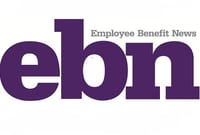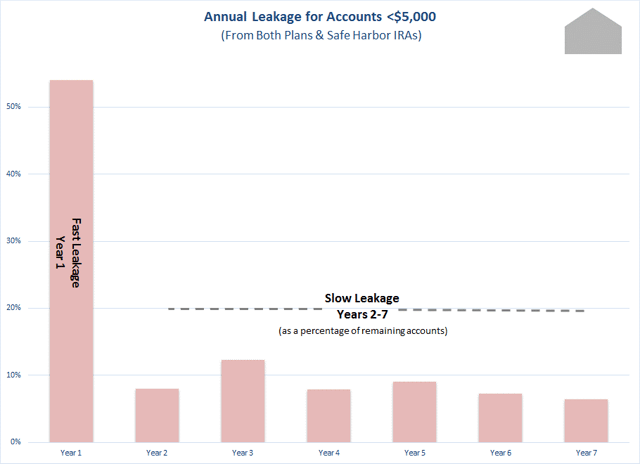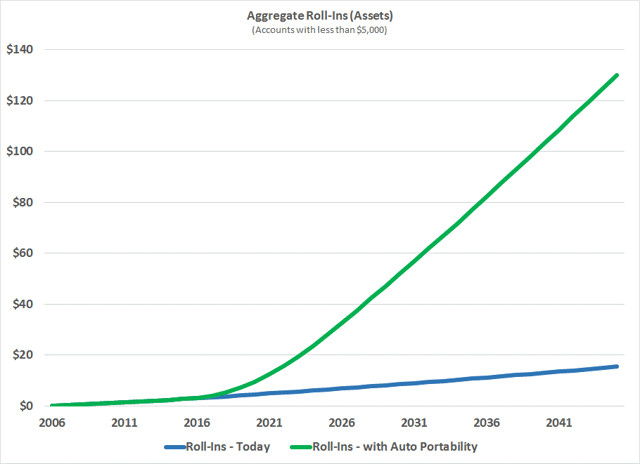 First, let’s review the definition of “leakage.” If we think of total 401(k) savings as a bucket of water, “leakage” refers to those retirement savings that, like water in a leaky bucket, are withdrawn from the U.S. retirement system every year. There are three holes in the bucket: cash-outs at the point of job change, hardship withdrawals, and loan defaults. According to the U.S. Government Accountability Office, one of these holes is much bigger than the other two combined—nearly 89% of all leakage is attributed to cash-outs that occur when a participant changes jobs. Hardship withdrawals and loan defaults together account for the remaining 11%.
First, let’s review the definition of “leakage.” If we think of total 401(k) savings as a bucket of water, “leakage” refers to those retirement savings that, like water in a leaky bucket, are withdrawn from the U.S. retirement system every year. There are three holes in the bucket: cash-outs at the point of job change, hardship withdrawals, and loan defaults. According to the U.S. Government Accountability Office, one of these holes is much bigger than the other two combined—nearly 89% of all leakage is attributed to cash-outs that occur when a participant changes jobs. Hardship withdrawals and loan defaults together account for the remaining 11%.
Examining the issue of leakage more closely, we discovered through our research that cash-out leakage isn’t always uniformly measured and reported across the industry. When discussing annual leakage, many reports simply refer to the distributions of those participants that leave their jobs and cash out, paying taxes and early withdrawal penalties, within any given calendar year. We call this “fast leakage,” and it’s similar to a pipe bursting and producing a stream of water in a short time span.
However, a sizeable quantity of cash-out leakage doesn’t happen in that first year, but occurs steadily over a period of years. We call this “slow leakage.” Continuing our water analogy, it’s more like the kitchen faucet that produces a steady drip. Over a long time horizon, that steady drip adds up to a substantial quantity of water. One example of slow leakage occurs when a plan sponsor automatically rolls an inactive account with less than $5,000 into a safe-harbor IRA. In this instance, the balance remains invested in the retirement system, and therefore, the mandatory distribution is not reported as leakage. However, according to our data, safe-harbor IRA accountholders continue to cash out their accounts year after year, albeit at a decreasing rate, as shown on the chart below.

*Source: Retirement Clearinghouse, LLC—Auto Portability Simulation
However, the simulation also shows that we can preserve those savings through the widespread adoption of auto portability. The primary APS scenario, in which auto portability is adopted over a 10-year period and remains in effect for a generation, demonstrates that cash-outs of 401(k) accounts with less than $5,000 can be reduced by two-thirds to less than $2.5 billion per year. In addition, the APS shows that auto portability could help preserve over $115 billion in savings by automatically rolling more than 3 million participants’ small accounts into their next employers’ plans when they change jobs.

*Source: Retirement Clearinghouse, LLC—Auto Portability Simulation
Fast and slow leakage can take a serious toll on the U.S. retirement system. The Auto Portability Simulation (APS) that we developed with Dr. Ricki Ingalls of Texas State University shows that over a generation, an estimated 89% of these small accounts will be cashed out through a combination of fast and slow leakage. And when we aggregated the results over the same time horizon, we were alarmed to discover that, if left unchecked, cash-out leakage of small accounts will add up to several hundreds of billions of dollars in lost retirement savings.
Spencer Williams is President and CEO of Retirement Clearinghouse, a portability solutions provider.With fast and slow leakage combining to present a formidable long-term challenge for the U.S. retirement system, embracing auto portability and roll-ins presents a no-risk, high-reward opportunity for plan sponsors and record-keepers to stem the flood and improve retirement outcomes for their participants.
Leakage is a big problem for the U.S. retirement system, but in our industry’s effort to address the issue, we sometimes forget that not all leakage is the same.
